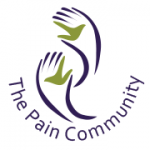Home Page › Forums › Treatment Options for Pain › Occupational Therapy’s Role In Pain Management – A Patient’s Perspective
Tagged: occupational therapy, pain, support
- This topic has 0 replies, 1 voice, and was last updated 2 years, 2 months ago by
 TPC_YaYa.
TPC_YaYa.
-
AuthorPosts
-
-
May 25, 2022 at 12:47 pm #440058
 TPC_YaYaModerator
TPC_YaYaModeratorAs a twenty-something university student, I told my doctor I was having difficulty writing with pens and pencils. The pain had become so bad that I had difficulty holding forks and spoons, so I was always choosing foods in the cafeteria that were socially acceptable to be eaten with my hands. Yay for pizza and burritos! I was down to only one swimming workout a week instead of every other day because my hands hurt so much with each stroke.
This kind of pain is a common problem for people like me who live with the chronic pain condition Ehlers-Danlos Syndrome. Hypermobile joints in my hands, fingers and wrists meant that the tighter I held onto a pen or pencil or a fork or spoon, the more that object seemed to slip around and the more painful my hands became. The doctor’s solution was a referral to an Occupational Therapist (OT). Not understanding the difference between a Physical Therapist (PT) and an Occupational Therapist, I went into the appointment with expectations of more exercises and advice about heat, cold and pacing.
The first thing that struck me was that the OT started the appointment by asking questions, lots of questions about more than my painful hands. The OT asked:
What types of pens and pencils did I use?
Where was I writing (room, furniture, etc.)?
What type of paper or notebook was I writing in?
What time of day did I do most of my writing?
Next, the OT had me demonstrate how I wrote with a few different pens and pencils and on different surfaces at different angles. Then the OT opened what looked to me like a treasure chest of writing instruments, attachments and supports. I left the appointment with a few of those treasures to try out for a week along with some ideas about exercise, heat, cold, and pacing. At the next appointment, the OT created a custom thumb/palm splint that made it easier to hold a pen or pencil with a thick cushioned grip. We continued to work together and in addition to fitting me with finger and wrist splints, the OT showed me how to grab, hold and lift a variety of items in ways that would minimize the types of stress on the joints that led to my dropping and spilling just about everything I touched.In a few short weeks of using the splint and the cushioned grip, the pain was diminishing. With some pacing strategies that built in rest and recovery time each day, I was able to get a good swimming workout completed more than once per week. I again started choosing cafeteria options like pasta or salads again.
Thanks to a fantastic first experience with an OT, I have asked for and received a referral to an OT for other issues. OTs don’t just work on hands. They have helped to make it less painful for me to be a participant in life. My desk and workspace have been and continue to be adjusted. My home and kitchen have more accessible arrangements and gadgets. I’ve learned that common household items make great assistive devices; for example, a pair of needle nose pliers in the kitchen are great for pulling the plastic safety seal off bottles.
Occupational therapy has played a significant role in my journey to live – and thrive – with pain.
Occupational Therapy’s Role In Pain Management – A Patient’s Perspective
-
-
AuthorPosts
- You must be logged in to reply to this topic.
